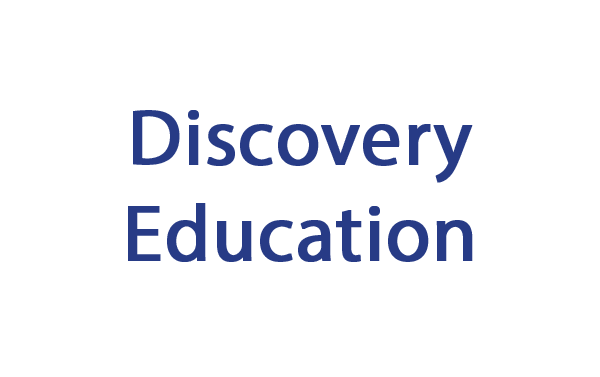

The Big Idea
We are surrounded by amazing materials that can be shaped, combined, condensed, frozen, melted and burned. In this unit, we are going to experiment with different kinds of materials, and become cooks, chemists and creators of new materials.
Key Learning Goals - Science:
3.2 Be able to conduct scientific investigations
Key Learning Goals - Technology:
3.4 Be able to respond to identified needs, wants and opportunities with informed designs and products
3.5 Be able to gather and use information to suggest solutions to problems
3.6 Be able to devise and use step-by-step plans
3.8 Be able to select the most appropriate available tools and materials for a task
3.9 Be able to work with a variety of tools and materials with some accuracy
3.10 Be able to test and evaluate their own work and improve on it
In Science, we’ll be finding out:
In Technology, we’ll be finding out:
In History, we’ll be finding out:
In Art, we’ll be finding out:
In International, we’ll be finding out:
Key Learning Goals for Core Subjects:
In this BrainPOP movie, they’ll clue you in to the mineral composition of some common crystals, and they’ll even tell you about some crystals that you might have sitting in your kitchen cabinets. In the process, you’ll learn why crystals have color and why they form in such regular shapes.
Tim and Moby will tell you all about the energy that state changes require, and the effect that extra energy has on atoms and molecules. You’ll learn about sublimation, which occurs when a solid melts directly into a gas, and also about condensation, when gas turns into liquid.
In this BrainPOP movie, Tim and Moby introduce you to mass, volume, and density, three of matter’s key physical properties. First, you’ll find out why measuring these properties is so darned important in the first place, and why scientists use the metric system to record these measurements. Next, you’ll learn the definitions of mass, volume, and density, as well as the ways of measuring each. Finally, Tim and Moby will clue you in to topics like displacement and the difference between mass and weight--all key facts you’ll need to know before you can master physics and chemistry.
In this BrainPOP movie, learn all about the elements and alloys we call metal. Find out about their physical properties, like ductility and hardness, as well as their chemical properties, like positive valence and the tendency to oxidize. Take a look at how metals are subdivided on the periodic table of elements. You'll learn about why metal is so important to people, too.
In this BrainPOP movie Tim and Moby will teach you about nanotechnology, the scientific arena that hopes to make these things a reality! First, you’ll discover what nanotechnology is and learn about some of the events that jump-started its development. Next, you’ll find out some of the ways in which scientists hope to use nanotechnology to make our world better and cleaner--as well as how nanotech has progressed so far! Plus, you’ll find out about one important down-side to nanotechnology.
In this BrainPOP movie on plastics, Tim and Moby will teach you about more than just the uses of these substances — you’ll learn about their physical and chemical properties, too. You'll also find out about the history of plastics, from the rubber balls that the ancient Mayans used, through the vulcanized rubber developed in the late 19th century, to the polymers you can find almost anywhere today.
In this BrainPOP movie, Tim and Moby will tell all about physical and chemical changes — and also give you lots of examples of these changes that we encounter every day. You’ll learn about the similarities between quick physical changes, like melting ice cream or a shattered watermelon, and slow ones, like the weathering that’s shaped the earth’s surface for millions of years. You’ll also find out about chemical changes, which include iron turning into rust, and how the food in our stomachs turns into life-sustaining nutrients.
Tim and Moby explain what matter is, and introduce you to the tiny atoms and molecules that make it up. You’ll discover how changes in temperature and pressure cause these particles to gain or lose energy, and the effect this has on a material’s physical properties!
See more relevant resources on BrainPop
The pottery industry is used as a case study to illustrate changes in the states of materials. The Investigating videos offer opportunities to see the initial stages of an experiment and make predictions.
Learn about magnetism, magnets around us and the Earth as a magnet with these videos and activities. Further resources will help you to plan and undertake an investigation.
Explore the properties of and uses for wood, glass, metal and plastic.
Find out about the formation and properties of rocks, soils and fossils. Observe and compare different rock types to understand their uses. Conduct your own experiments and record your observations.
Junkyard – Reversible & Irreversible
Decide whether the change of state in a material is reversible or irreversible. Explain that some changes result in the formation of new materials, and that this kind of change is not usually reversible, including changes associated with burning and the action of acid on bicarbonate of soda.
Junkyard – Material Properties
Identify objects in terms of their properties e.g. flexible / rigid. Compare and group together everyday materials on the basis of their properties, including their hardness, solubility, transparency, conductivity (electrical and thermal), and response to magnets.
Junkyard – Identifying Properties
Compare materials in terms of a specified property. Compare and group together everyday materials on the basis of their properties, including their hardness, solubility, transparency, conductivity (electrical and thermal), and response to magnets.
http://science.pppst.com/magnets.html
Pppst.com website has links to resources, videos and presentations about magnetism for children and teachers.
www.ehow.com/about_5037835_playdoh-history.html
e-How website features a history of Play-Doh.
www.bigsiteofamazingfacts.com/how-is-glass-made
Big Site of Amazing Facts website explains how glass is made.
www.objectlessons.org/index.php?mod=PageMod.showComponent§ion_id=5&category_id=19&component_ id=146&component_type=feature
Object Lessons website has a photograph of the Roman wax tablet and stylus.
http://ipst.gatech.edu/amp/collection/museum_invention_paper.htm
Georgia Tech website paper museum has a history of papermaking and its spread throughout the world.
www.wipapercouncil.org/invention.htm
Wisconsin Paper Council has a website featuring a history and facts about paper.
http://inventors.about.com/od/pstartinventions/a/papermaking.htm
About.com website has a history of papermaking.
www.ancientnile.co.uk/saltdough.php
Ancient Nile website has a history of salt dough and tips for making it.
http://inventors.about.com/od/pstartinventions/a/plastics.htm
About.com has a history of plastics.
http://en.wikipedia.org/wiki/Plastic
Wikipedia has information and photographs about the development of plastics.
www.historylearningsite.co.uk/plastic.htm
History Learning website has a history of plastics.
http://video.about.com/chemistry/Physical-and-Chemical-Properties-ofMatter.htm
About.com has this video about the properties of matter.
www.youtube.com/watch?v=TBnNO2-3DKI
YouTube has this video of a child making ‘goop’.
https://www.youtube.com/watch?v=tGfLhPslEjQ
So, we know what materials are, but can we make new materials? Or improve the materials we already have? In this episode of Crash Course Kids, Sabrina shows us how Material Scientists are working on these two things today.






